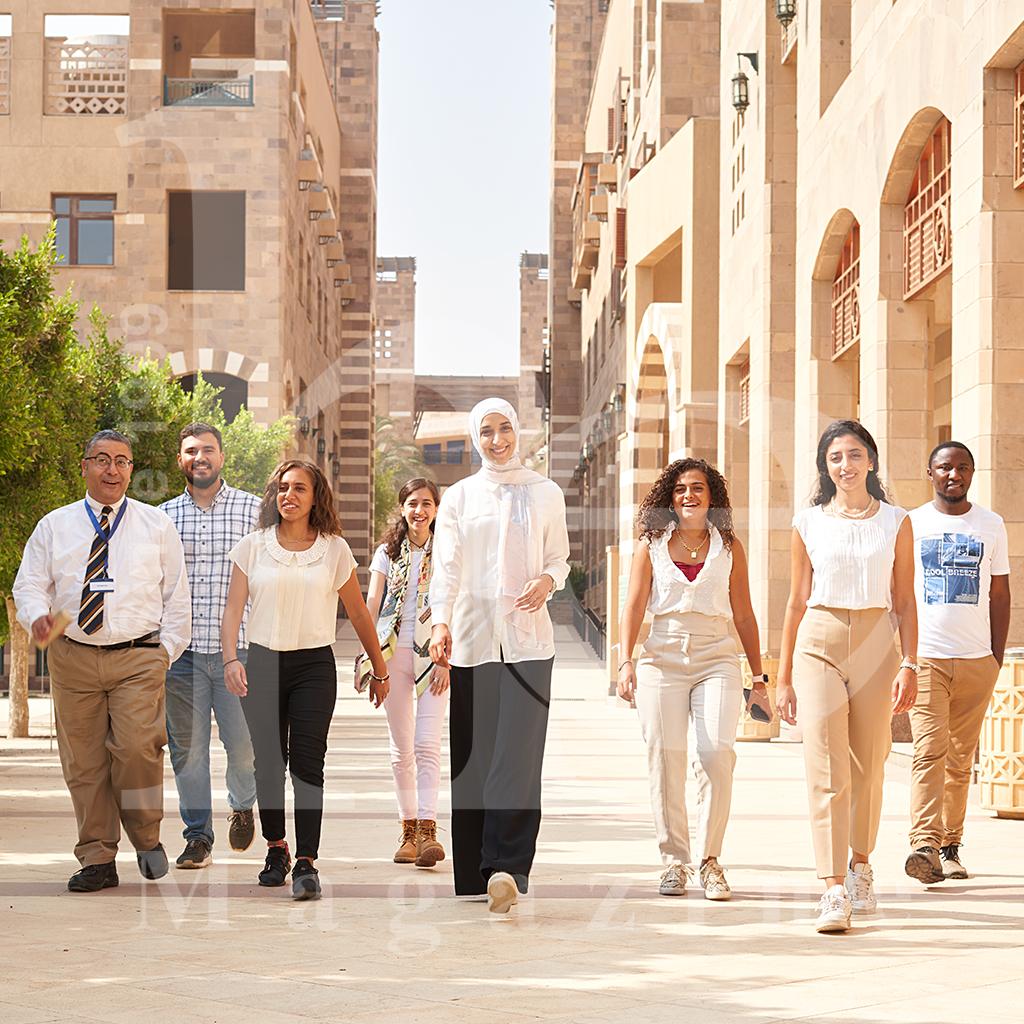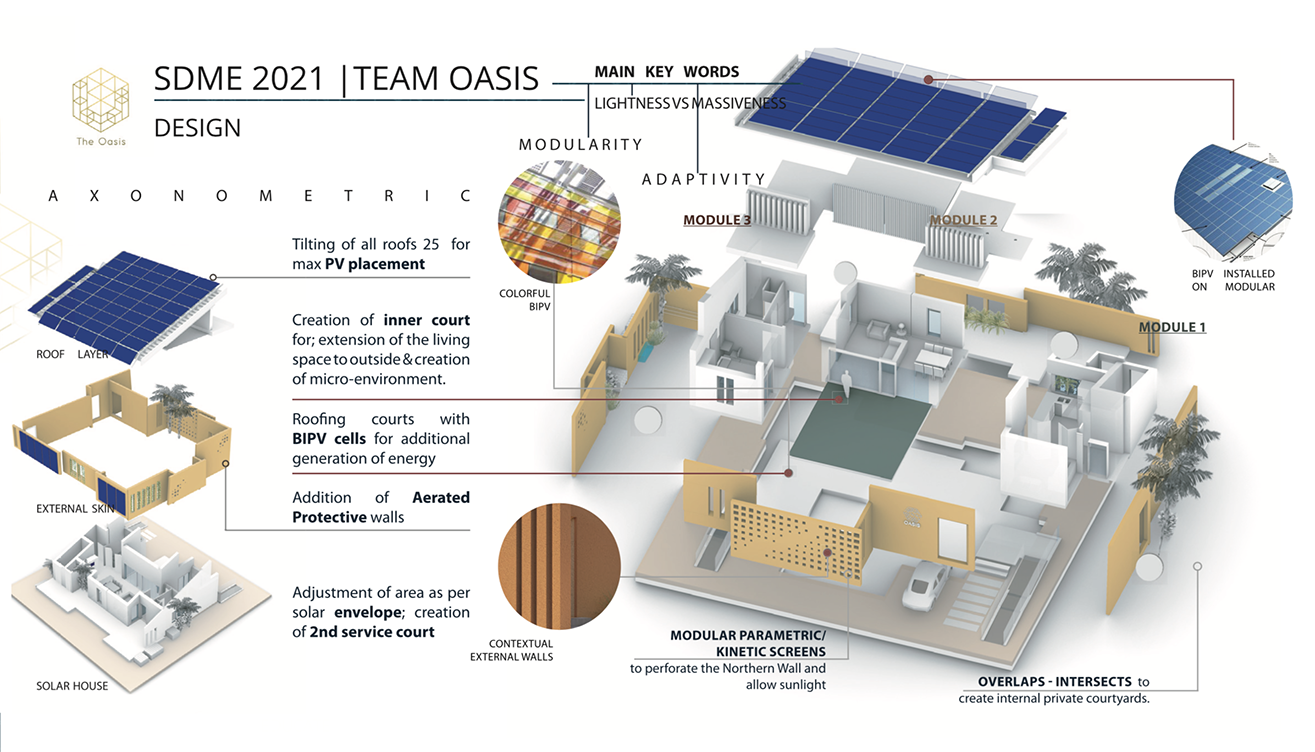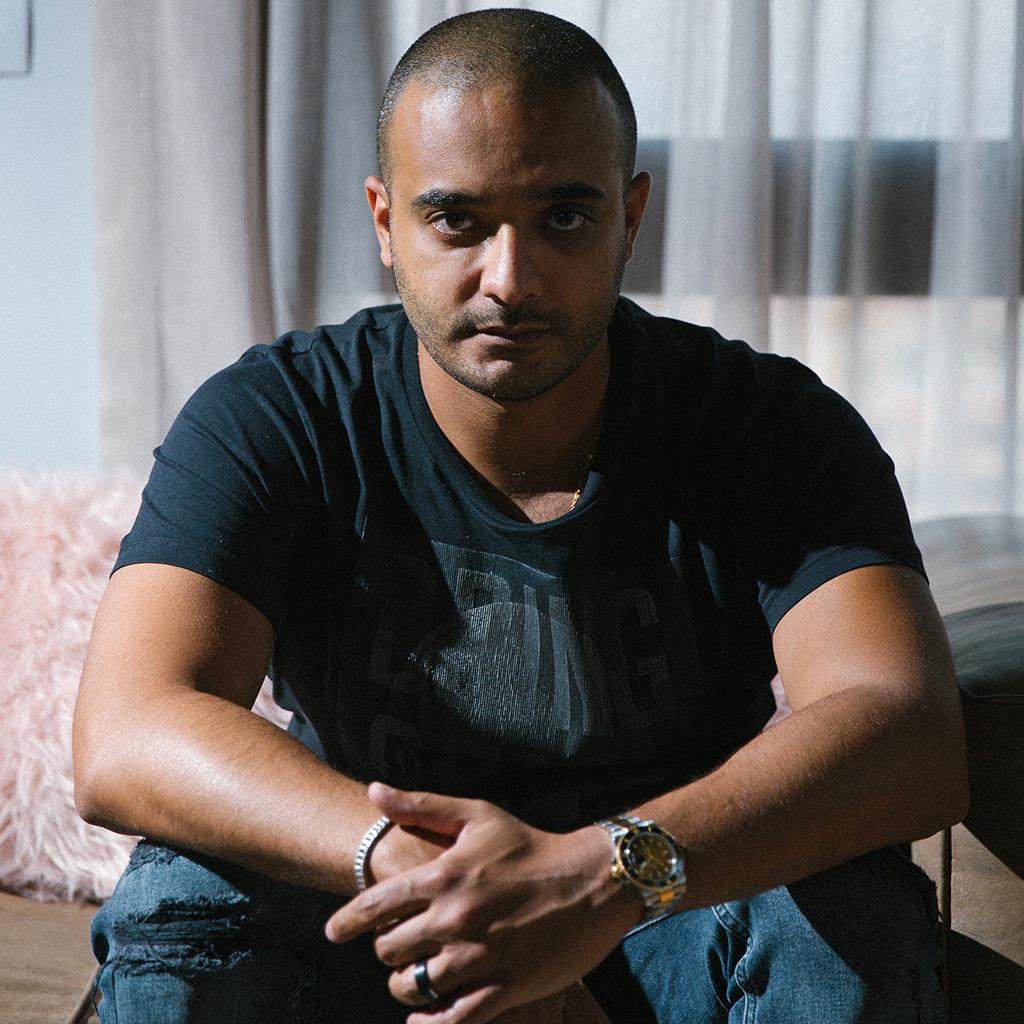
Written by: Farah Waleed
Date: 2021-09-01
The subject of sustainability, green technology, and environmental friendliness has gained enormous importance in the last few years. In this edition of He Home, we sat with promising young architects who are trying to shift the movement in architecture by building a sustainable zero energy house that withstands the harsh desert environment. The young architects are the first Egyptian team to join the Solar Decathlon Middle East competition, which in itself is an achievement.

The subject of sustainability, green technology, and environmental friendliness has gained enormous importance in the last few years. In this edition of He Home, we sat with promising young architects who are trying to shift the movement in architecture by building a sustainable zero energy house that withstands the harsh desert environment. The young architects are the first Egyptian team to join the Solar Decathlon Middle East competition, which in itself is an achievement.
What is Team Oasis?
Team Oasis is a team of more than 40 students and almost 11 professors from different departments across the School of Sciences and Engineering at the American University in Cairo. The team includes members from the departments of architecture, construction engineering, mechanical engineering, energy engineering, communication, water management, and sustainability.

Can you tell us more about the competition?
The Solar Decathlon is an international competition sponsored by the US energy department since 2002. It was then expanded to Europe, Latin America, China and finally in the Middle East. The Solar Decathlon Middle East was first hosted in Dubai in 2018 and the winning team was from Virginia Tech. SDME 2021 is again hosted in Dubai in parallel to EXPO 2022 which is a really good opportunity for teams from across the Middle East to start introducing this kind of sustainable building. SDME 2021 invites and challenges post-graduate and undergraduate teams from universities across the Middle East to design, build and operate sustainable solar-powered houses. The competition is also known for the “Sustainable Building Olympics” for being the world’s most important green construction project competition. SDME this year has decided to focus on seven interrelated pillars that each team has to keep in mind when designing and building their houses, and these are sustainability, future, clean energy, innovation, mobility, smart solutions, and happiness.

Can you tell us more about your design and what inspired you?
We are working as a team to develop a 100 sqm house that is fully sustainable, energy-efficient, and that is completely flexible and pre-fabricated. The concept of the house is designed in a way that fits the desert environment which is simultaneously related to the 1.5 million Feddan Project of the Egyptian government. We’re trying to make a prototype of the house that withstands the harsh environment of the desert, not only because the competition required this but also to take part in the 1.5 million Feddan Project. This is why our house is designed with heavy walls which are double walls; the exterior walls of the double walls are really bulky, and the interior walls are used as an insulator. We got inspired by this from the pharaonic piles and the bulky mud walls that are used in rural architecture. As a team representing Egypt for the first time in the competition, we wanted to create something that reflects our Egyptian identity. We didn’t only want this sense of Egyptian identity to be reflected in our architecture facades, but also in terms of the user’s experience inside the house. So, for example, in Egyptian society— particularly in rural areas— people tend to gather at each other’s houses, and this is why we incorporated open courts in our design that are secluded from the rest of the house, whereby Egyptians can maintain the same level of social interaction with people and still ensure that the privacy of the homeowners is not violated. The target user group of this prototype will be the youth of Egyptian farmers that are trying to start their lives in a new context and live a futuristic kind of life. This house aims to provide flexibility in terms of its interior design, and at the same time, accommodate the basic needs by having a kitchen, bathrooms, bedrooms, in addition to an office space to cater to the online lifestyle during Covid-19 and afterward.

What is your project’s timeline?
The competition was supposed to take place in 2020, but due to Covid-19, it got postponed for a year. The competition committee from Dubai has requested AUC to enter the competition. They requested our architecture faculty head, Dr. Ahmed Sherif, to choose a team to lead. We were required to submit a proposal and as soon as it was accepted, we proceeded. We started working on the design last November, primarily as an architecture team. This was our jump start, then the other departments started composing other teams and we started having input.
Before any of the other teams from the different departments joined, we started with conceptual designs and a phase of brainstorming ideas. The timeline of the competition starts a year prior to the competition; a time period when we design and meet the deadlines of the several deliverables required. But due to the tight schedule, as we entered a year later than any other team, we are fast-tracking our project over a year. Apart from the deliverables that we tend to deliver up until the competition date, we submit a report which is a conclusion of the whole project before the competition. In Addition to that report, we build the building in Egypt, disassemble it, ship it into containers and deliver it to Dubai, and in Dubai, we reassemble the building again to a full 100 percent stand-alone building in 15 days.
On top of that, we don’t have the whole day to be working, we have limited hours. After those 15 days, we have public tours that allow the public in Dubai to enter all houses in the Solar Park where the competition is taking place. In those public tours, we are supposed to introduce people to our project and explain what our design offers. All those tours are coordinated with our communication team. Meanwhile, we have juried contests and monitored contests. In brief, people assess our project in qualitative and quantitative measures.

What is the mission of Team Oasis?
We need to build a 100 sqm house that is totally relying on energy and utilizing sustainable solutions. Those sustainable solutions and energy-efficient mechanisms that the house must be completely relying on fall under 10 points in the competition, and they could be exemplified in energy management, water management, constructability, architecture, communication, sustainable transportation, and innovation. The goal is to apply theoretical knowledge to a realistic project. The type of the project depends a lot on experimentation. The PV modules that we have, for example, help us to start by building a prototype from them; so it’s not something we can buy off the shelf. The aspect of buying things off the shelf and things that are already ready in the industry is still there because at the end of the day we are trying to build a house that can be mass-produced later. However, the innovative parts are all understudies. We also need to promote awareness on energy efficiency and solar energy, which is a really important point in the contest.
We also need to give AUC and its partners exposure during EXPO 2022. It is important to mention that Hassan Allam is our main sponsor for the project.

How is this project beneficial to Egypt? And is it applicable?
It is beneficial in the sense that it shows that Egypt has calibers that can produce such high-tech houses. The competition will be occurring during EXPO in Dubai which is a great opportunity for exposure. And we, as Team Oasis, are not only representing AUC but also Egypt, as we are the only Egyptian team participating. It is the first time for an Egyptian team to participate in this competition, this is a responsibility and an opportunity that we need to make the best out of. We are also trying to introduce new sustainable and energy-efficient ideas that could be applicable in houses— not necessarily the full high-tech aspects in the house, but some items could be applicable. We also aim for the prototype to be replicated and re-utilized in the 1.5 million Feddan Project with some compromises that could happen in order to reduce the costs of the house, especially in the aspects related to energy. But the overall layout and the essence of the project will be as desired, and it’s all up to the time we are going to build it in and the available amount of budget. This is flexible when it comes to a house… it is possible and applicable.

What are you hoping to achieve next?
Relating to the 1.5 million Feddan project, we are aiming that our design becomes a potential prototype for the urban encroachment of the desert here in Egypt. The long-term relevance of this has to do with Egypt’s strong dependency on the Nile. We overuse aquatic resources which cause pollution; therefore, we have to urbanize desert lands. Our prototype adapts to harsh desert conditions. The aim of this is to cause a shift in architecture and the use of technology in Egypt which is beyond the mere purpose of the competition itself.

What are some of the challenges you faced during the project and how did you overcome them?
The main challenge that we faced during the competition was the coordination between the teams. To overcome this coordination challenge, we have 2 weekly meetings that are set; one of them is the architecture meeting and the other one is the general coordination meeting. In the general coordination meeting, all representatives have to meet and each team member has to update the entire team with their progress. Along with those two meetings, there are several smaller, quicker meetings or technical meetings that take place throughout the week as required. There are also several international workshops that have been conducted by SDME for all teams, mainly to discuss any questions or requests that we have, and to refresh us with some of the competition rules in case we have forgotten any of them.

What is the most rewarding moment during the competition?
Entering the competition is an achievement on its own. Many teams from all over the world always try to enter the competition, submitting several proposals. When they submit their proposal, the accepted participants’ names are announced. Reaching this stage is considered an achievement.
What is one piece of advice you would give to young architects?
If we would give one piece of advice to young architects, it is going to be this: incorporate sustainable and energy-efficient measures in your designs, because this is the future.





